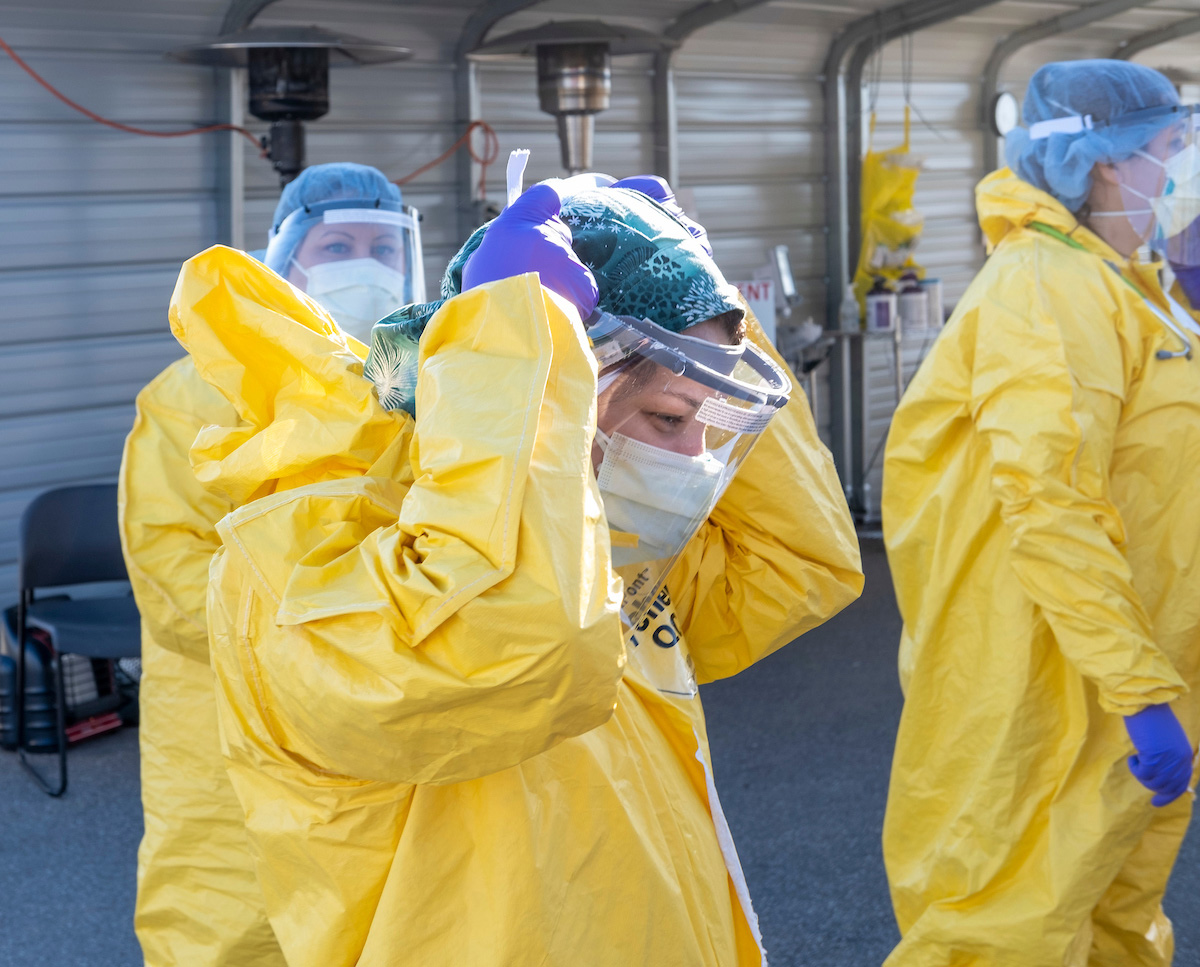ROLLA, Mo. – A team of researchers at Missouri University of Science and Technology found that several layers of household air filters can achieve filtration performance similar to masks rated N95 – masks that capture 95% of particles. The researchers studied the filtration performance of non-medical materials and recommend making homemade face masks with a combination of fibrous and fabric materials. They say the materials will sufficiently remove aerosols and avoid the inhalation of fiber fragments generated during the cutting and folding of the filters.
“As a core component of the face mask and respirator, the filter materials need to achieve a high efficiency in particle removal and a low flow resistance to ensure breathability,” says Dr. Yang Wang, assistant professor of environmental engineering at Missouri S&T. “Our research looked at vacuum bags, coffee filters, activated carbon filters and various types of fabrics.”
With the shortage of personal protective equipment (PPE) due to COVID-19, people have turned to substituting homemade masks to protect people from the coronavirus’s spread through droplets and aerosols. While droplets can be removed through the fabrics in homemade masks, little research had previously been done related to their filtration performance.
The Missouri S&T research team found that fibrous filters, such as vacuum and coffee filters, can achieve a filtration efficiency and flow resistance similar to that of N95-rated mask materials. They also found that fabrics, such as a scarf, bandana or pillowcases are less inefficient for collecting aerosols.
“It was hypothesized that the performance of household fabrics would not compare to the filter materials used in commercial medical filters,” says Wang. “But while evaluating four types of medical materials and thirteen types of non-medical materials, we found that fibrous filters, such as household air filters, can achieve a filtration efficiency and flow resistance similar to that of N95 mask materials.”
The research team also observed a positive relationship between the thread count of the fabrics and filtration efficiency. They concluded that the difference between the fibrous and fabric materials is that fibrous materials could further remove aerosols with electrostatic mechanisms, which allows an adequate removal of aerosols.
The team initially found that few existing studies comprehensively assessed the effectiveness of non-medical materials in particle filtration, which has led to current uncertainties when deciding what the public should use in homemade PPE.
According to Wang, dedicated filters such as medical masks use electrostatic interactions to filter particles in addition to the general mechanisms of impaction, interception and the movement of particles in fluid called Brownian diffusion. On the other hand, household fabrics mainly rely on the low permeability of the materials to collect aerosols.
The overall filtration efficiency of a filter is calculated by dividing the concentration of particles collected by that of total particles. Based on that, the researchers initially believed a filter’s overall efficiency may depend on the amount of aerosols and not particles’ different sizes. However, as COVID-19 may be carried by aerosols of various sizes, the size-dependent filtration efficiency of the filter materials had to be carefully examined.
The research, titled “Filtration performances of non-medical materials as candidates for manufacturing face masks and respirators,” was published in the International Journal of Hygiene and Environmental Health Vol. 229 in August 2020. The Missouri S&T research team consists of Wang, his graduate student Weixing Hao, Dr. Joel Burken, chair and professor of civil, architectural and environmental engineering at S&T, and Dr. Hongyan Ma, assistant professor of environmental engineering at S&T.
###
Original post https://alertarticles.info
